Pros
Cons
Introduction
The In-Ear3s retail for $149 (MSRP). With a fit akin to earplugs, these headphones can accurately portray a wide range of sounds, and since they fit in-ear, like ear plugs, sound stays where it should. Overall, these are a good buy.
Product Overview
{{section_header}}{{section.name}}{{/section_header}}
Get to know the Creative Aurvana In-Ear3 in-ear headphones.
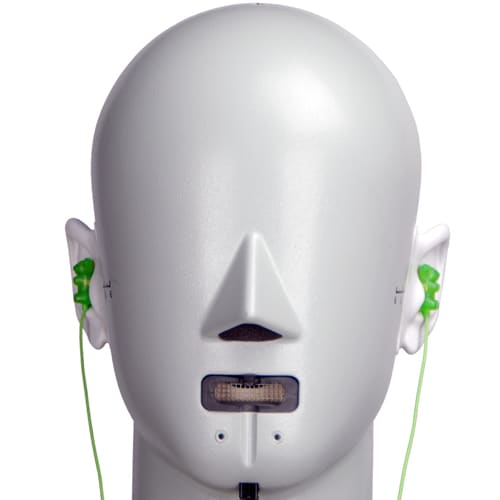
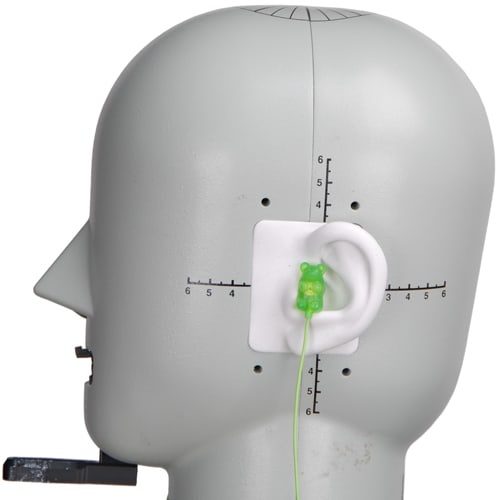
Speakers
{{section_header}}{{section.name}}{{/section_header}}
Behold, the speaker element of the {{product.name}}. Notice they are guarded by a small bit of foam, and a plastic rail- these may not block out all the gunk in your ears from entering the nozzle, but it's better than nothing.
Back
{{section_header}}{{section.name}}{{/section_header}}
The Creative logo is prominently displayed on the backs of these in-ears, which will face outward when you wear them.
Cable
{{section_header}}{{section.name}}{{/section_header}}
The 3.93 foot cable of the {{product.name}}s terminate in a standard 1/8th inch plug, and has a boringly common rubber wire coating.
As previously mentioned, the {{product.name}}'s plug is a common 1/8th inch jack.
As you can see, the cord guards of the {{product.name}} are fairly uninspiring. Do NOT tug these out of your ears by the wire, as you run the risk of snapping the relatively weak solder points on the inside of the buds.
Additional Features
{{section_header}}{{section.name}}{{/section_header}}
Not only does the {{product.name}} come with several different sleeve choices, but it also comes with an airplane adapter and a cleaning tool.
In the Box
{{section_header}}{{section.name}}{{/section_header}}
Along with your coffee-colored earbuds, the {{product.name}}s come packaged with two types of sleeves and several different sizes, a cleaning tool, airplane adapter, carrying case, cable management system. Assorted documentation and semi-smug business card comes with the headphones, which also includes a fairly horrifying Proposition 65 statement in the safety booklet.
Durability
{{section_header}}{{section.name}}{{/section_header}}
In-ear headphones aren't typically very durable, and the {{product.name}}s don't do a whole lot to buck that trend, as they do not appear to have much in the way of preventing breakage. Baby these headphones.
Aesthetics
{{section_header}}{{section.name}}{{/section_header}}
Because these are in-ear headphones, they're not going to be flashy or draw many adoring eyes, but considering how they look like aesthetics didn't factor into the design process, this is probably a good thing.
Frequency Response
{{section_header}}{{section.name}}{{/section_header}}
Overall, the {{product.name}}s have a fairly even frequency response, as it doesn't really emphasize many frequencies over others. Bass is emphasized a little bit, but the signal intensity of those notes still stay within our ideal limits very well. If you're very young (or a robot), you may notice that some of the higher frequencies are dropped a bit. Still, this is unlikely to ruin your listening experience.

Click here for more information on our frequency response test.
Distortion
{{section_header}}{{section.name}}{{/section_header}}
Well, the {{product.name}}s aren't perfect, and it shows when measuring their distortion, which increases as the frequency gets lower. While it does manage to stay under the 3% level that begins to get annoying, it's entirely possible that you may notice it in sub-100Hz sounds.
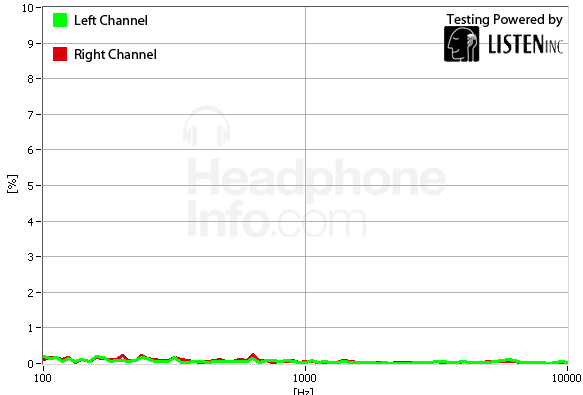
Click here for more information on our frequency response test.
Tracking
{{section_header}}{{section.name}}{{/section_header}}
While this response isn't perfect, the errors in channel preference are so minor that you are probably not going to be able to hear them anyways.
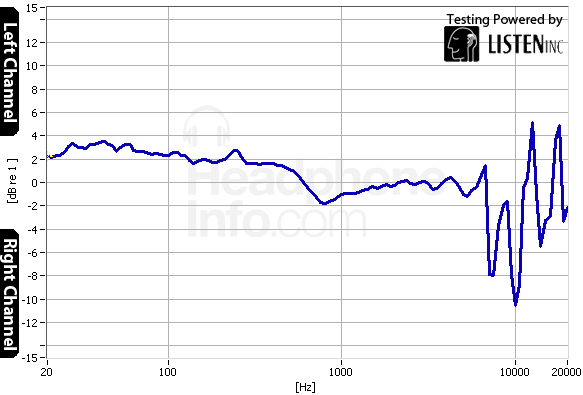
Click here for more information on our frequency response test.
Isolation
{{section_header}}{{section.name}}{{/section_header}}
If you use the foam tips included in the packaging, you can bet the house on not being able to hear anything short of an apocalypse while listening to the {{product.name}}s. By attenuating as much sound as they do, you'll feel sound before you'll hear it.

Click here for more information on our isolation test.
Leakage
{{section_header}}{{section.name}}{{/section_header}}
Not surprisingly, the seal made in the ear canal prevents the headphones from leaking sound. You will find it nearly impossible to bother those around you with your music.
Click here for more information on our leakage test.
Maximum Usable Volume
{{section_header}}{{section.name}}{{/section_header}}
While it's impressive that it is theoretically possible to listen to your {{product.name}}s at a level of 126.35dB before the distortion becomes annoying, you'd probably be more annoyed by the persistent tinnitus accompanying listening to music that loudly. Don't do it.
Click here for more on our maximum usable volume test
Short-Term Use
{{section_header}}{{section.name}}{{/section_header}}
In-ear headphones are typically uncomfortable, as they rely on putting pressure on the inside of your ear canals to stay put. However, the {{product.name}}s do a couple things to sidestep some of these issues somewhat. First, they offer the use of foam tips, which form to the exact shape of your ear. Second, they distribute weight over your pinna, meaning that the weight distributed to the ear canal is relatively low. While they are still in-ears, they aren't that uncomfortable... relatively speaking, of course.

Extended Use
{{section_header}}{{section.name}}{{/section_header}}
Over time, the foam makes your ear canals build up heat a little bit, and this can get quite uncomfortable, so the score is a little lower here.
Customizability
{{section_header}}{{section.name}}{{/section_header}}
Outside of having the ability to change the sleeves, there really isn't a whole heck of a lot one can do to customize the {{product.name}}s. It's not a bad thing per se, as they aren't visually striking or huge on your head.
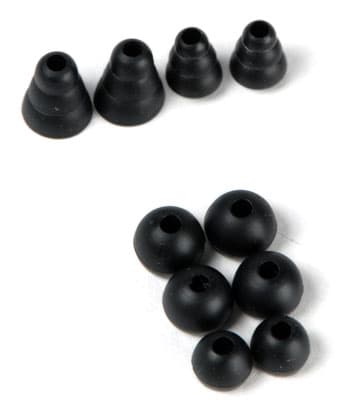
Cable Connectivity
{{section_header}}{{section.name}}{{/section_header}}
The {{product.name}}s have a 1/8th inch plug that can be used with the optional airplane adapter to combat those sky-robbers who would charge you money for a terrible in-flight movie. Outside of this, however, there are no other adapters or connectivity options.
Portability
{{section_header}}{{section.name}}{{/section_header}}
Because these are in-ears with a cable management system and a carrying case, these are extremely portable headphones that can pretty much go anywhere. Because their carrying case is so small, it can comfortably fit in most jean pockets.
Maintenance
{{section_header}}{{section.name}}{{/section_header}}
While it is true that the cleaning tool helps with maintaining your headphones, there really isn't a whole lot one can do to perform preventative maintenance on their headphones. That's not to undersell the ability to clean out nozzles, however, as that is very important for the continued use of in-ears.
Sony XBA-3
Design
While both of these headphones are in-ears, they have a very radically different internal design. For example, where the Creative Aurvana In-Ear3s use only one driver per bud, the XBA-3s use 3, for 6 total balanced armature drivers. While the merits of multiple drivers for in-ears can be debated ad nauseam, we’ll compare the measurables below.
Frequency Response
Both have even frequency responses, and shouldn’t leave you wanting more, but the Sony XBA-3s maintain a lot more of the high end.. Both can be equalized without much trouble.
Distortion
Both have minor distortion issues, but the Creative Aurvana In-Ear3s technically have a teeny tiny bit more.
Tracking
Neither should have any audible channel preference issues, but they’re not perfect either.
Isolation
Both are great isolators, but the foam tips of the Creative Aurvana In-Ear3s are truly fantastic for this.
Comfort
While the XBA-3s feel a little lighter, the Creative Aurvana In-Ear3s do a bit more to alleviate the pressure on your ear canal than the Sony in-ears do. Still, because humans have wildly differing anatomy in the ear, it’s definitely worth it to try each on and decide for yourself before plunking down the money to buy either.
Verdict
With similar performances and function, this comparison comes down to cost, what’s available to you, and isolation. If you want a low-cost pair of in-ears that isolate fantastically well, the Creative Aurvana In-Ear3s are the way to go. If you’re okay with spending a bunch more money for the XBA-3s and a bit more in the aesthetics and novelty departments, those are good headphones too.
Sennheiser IE8i
Design
Internally, both headphones are very similar, but the Sennheisers are made of a rather blocky black plastic, and the Creative Aurvana In-Ear3s sit in your antihelix without putting pressure on any part of your pinna. Where the Creative Aurvana In-Ear3s are unable to be re-cabled, the Sennheisers have detachable buds in the event of wire or solder destruction.
Frequency Response
Each set of headphones has a frequency response that will appeal to different types of listeners. For example, the Creative Aurvana In-Ear3s will appeal more to the audiophile crowd, while the IE 8is will appeal to those who like over-emphasized bass frequencies. At this performance point, it’s a matter of taste.
Distortion
Both have minor issues with distortion, but the IE 8is have much less.
Tracking
Both have excellent tracking.
Isolation
The Creative Aurvana In-Ear3s trounce most other headphones in isolation, and the same is true versus the Sennheiser IE 8is.
Comfort
While both sets of in-ears have their advantages and disadvantages, the IE 8is have a bit more in the way of sleeve customizability. Still, both have a wide array of options, and the foam tips of the Creative Aurvana In-Ear3 conform to your ear canal. Try to give each a shot before buying.
Verdict
While both headphones have a lot to offer, the Creative Aurvana In-Ear3 definitely give you a lot more bang for your buck, as they retail for hundreds of dollars less than the Sennheiser IE 8is. While it’s true that the Aurvana In-Ear3s don’t have a remote for smartphone use, you’ll have to weigh your priorities.
Etymotic Research Mc5
Design
By design, in-ears are more alike than they are dissimilar, but the Etymotic Research mc5s are different in that they not only use different style sleeves, but that they hang directly from the ear canal, and they don’t loop over the ear. The Creative Aurvana In-Ear3s seem more versatile at first, and neither set has a remote or mic for smartphone use.
Frequency Response
Both sets of in-ears have a fantastic frequency response for their class of headphone, but that of the Creative Aurvana In-Ear3s will probably be more palatable to the casual user, as it emphasizes bass more, and stays within our ideal limits a bit better than the Etymotic in-ears.
Distortion
While the Creative Aurvana In-Ear3s don’t really have a huge problem with distortion, the mc5s have an insanely low amount. The difference should not be very audible, but it is measurable, especially in the low end.
Tracking
Both sets of headphones have fabulous tracking responses, so you shouldn’t notice any erratic shifts in channel preference.
Isolation
Both sets of headphones are incredible isolators, and you’ll feel outside sound before you hear it in many cases. You can’t go wrong here.
Comfort
Here is where the difference in tips matters most, as the comfort level of both of these headphones are very different. Though both have plastic sleeves, the Creative Aurvana In-Ear3s also have a set of foam tips that conform to your ear canal, while the mc5s have a triple-flanged sleeve that barricades your ear canal in three different pressure points, and it’s very uncomfortable at first. Some people have no issue with it, but the flanged tips don’t come in different sizes, so if it’s too small you’re out of luck. Not so with the Creative Aurvana In-Ear3s.
Verdict
While both are incredible in-ears for the price, the Creative Aurvana In-Ear3s give a measurable bump in performance and options in certain areas. Fans of low distortion should stick with the mc5s, however, as the Creative Aurvana In-Ear3s do have quite a bit in the low end.
Conclusion
{{section_header}}{{section.name}}{{/section_header}}
When it comes to entry-level headphones, very few cans give you a combination of performance and value like the {{product.name}}s. Sure, they don't give you the super-low distortion that audiophiles prize, but overall they're a fantastic first set of in-ears with a great frequency response and superb isolation.
These headphones aren't perfect, though we've never come across a pair that are. For example, the distortion in the low frequencies is just barely audible if you know what you're looking for. Regardless, that's the biggest problem we have with its performance; these aren't very flawed cans.
If you're looking for an affordable set of in-ears that will give you the performance you're looking for, and the isolation you crave in the outside world, the {{product.name}}s are a great choice for a first-time buyer. Just be aware that these are best fit for a dedicated media player with an output impedance of less than 3.5 ohms, and not a smartphone, as they do not have a remote or mic to use with phone calls.
Meet the tester
A seasoned writer and professional photographer, Chris reviews cameras, headphones, smartphones, laptops, and lenses. Educated in Political Science and Linguistics, Chris can often be found building a robot army, snowboarding, or getting ink.
Checking our work.
Our team is here to help you buy the best stuff and love what you own. Our writers, editors, and experts obsess over the products we cover to make sure you're confident and satisfied. Have a different opinion about something we recommend? Email us and we'll compare notes.
Shoot us an email


